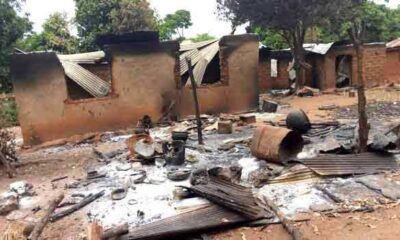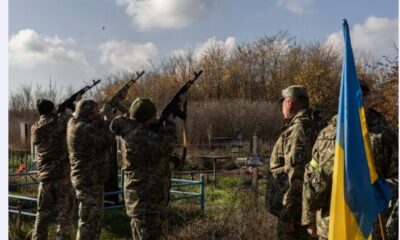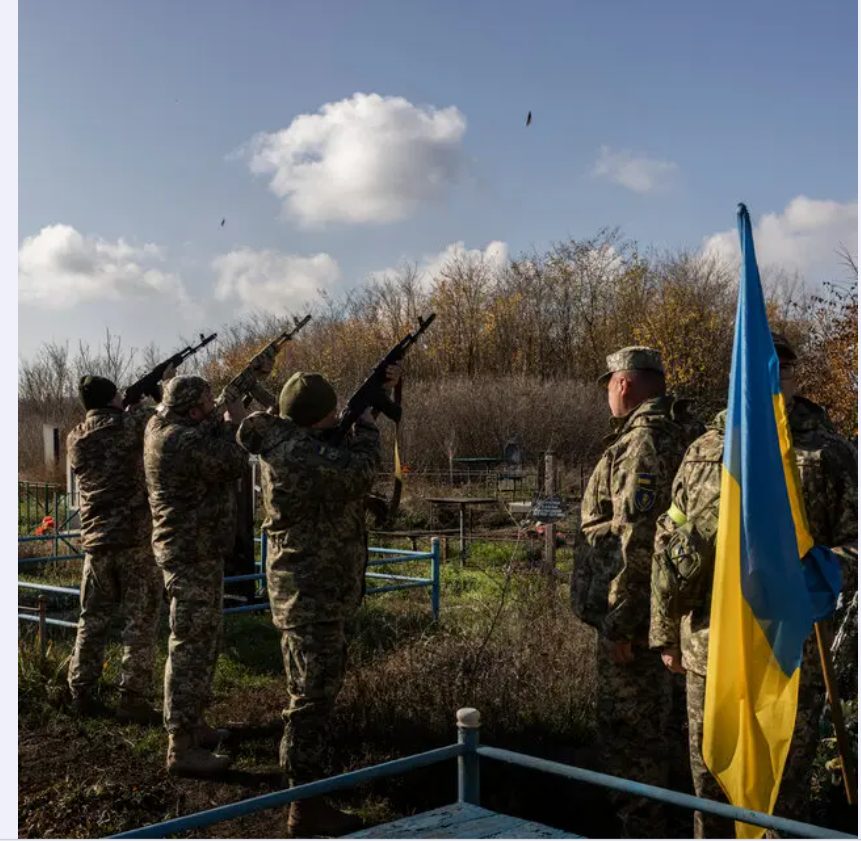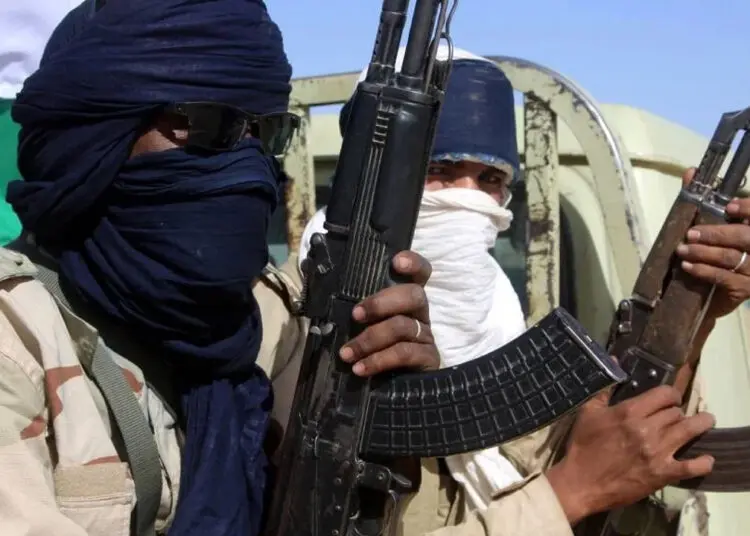Trending
Lawmaker visits Nnamdi Kanu, resolves lawyers’ restriction
Published
6 months agoon
By
Ekwutos Blog
A lawmaker representing Ikwuano/Umuahia North/Umuahia South Federal Constituency, Abia State, Obi Aguocha, has visited the detained leader of the Indigenous People of Biafra, Nnamdi Kanu.
The visit which took place on Thursday, October 24, 2024, is part of an ongoing effort to find a political solution to the continued detention of the IPOB leader.
Kanu, who was arrested on June 27, 2021, in Kenya and subsequently extradited to Nigeria, is facing charges of terrorism, treasonable felony, and inciting violence through his Radio Biafra, amongst others.
A statement issued on Saturday by the media team of the lawmaker noted that Aguocha was recently approached by Kanu’s legal team, complaining of its inability to interface with the detained IPOB leader.
The statement read in part, “A few days ago, the lawyers to Mazi Nnamdi Kanu reached out to his Honourable member, Obi Aguocha, representing Ikwuano, Umuahia North, and Umuahia South federal constituency. This was about the long-running difficulties being encountered by the legal team in their efforts to gain access and meet with their client.
“Hon Obi Aguocha took urgent steps in writing the Department of State Security and Tajudeen Abbas, Honourable Speaker of the 10th House of Representatives, seeking their immediate intervention.
“A meeting of the aforementioned was positive to the effect that Hon Obi Aguocha having inquired from the DSS, who informed that the seeming pause to accessing Mazi Nnamdi Kanu was occasioned by his lawyers asking the judge to recuse herself, which requires further legal process and is also known to both parties.
“Hon. Obi Aguocha had a physical audience with Nnamdi Kanu on Thursday, 24th of October 2024, in the company of an immediate family member, Ms Ezioma Stella Ikpo Hon. Obi Aguocha fully briefed Mazi Nnamdi Kanu about the circumstances during their meeting.”
The statement further noted that the legal team have now been granted access to Kanu.
“A resolution was reached regarding the lack of access to Nnamdi Kanu by his legal team, who hereby are granted the requisite access to their client”, the statement added.
It also commended the DSS leadership in its handling of the medical needs of Kanu, saying “Nnamdi Kanu is keeping well and looks strong.
“Hon Aguocha appreciates the commendable efforts of the new leadership of the DSS in ensuring that Nnamdi Kanu’s healthcare needs are met, including the approval of his request for access and attention to private medical care and to a doctor of his choice, to which Hon Obi Aguocha is pleased to confirm that Mazi Nnamdi Kanu has received private medical attention as recently as October 3, 2024.
“Hon Aguocha deeply appreciates the uncommon and courageous effort of the Honourable Speaker of the 10th House of Representatives for his quick intervention, which has facilitated these positive outcomes.
“It should be noted that Mazi Nnamdi Kanu’s fundamental human rights as guaranteed under the 1999 Nigerian constitution as amended and other relevant instruments of the United Nations should be upheld.
“Hon Obi Aguocha remains optimistic that in the end, a political solution will be achieved, leading to the release of Mazi Nnamdi Kanu and also for the peace and stability of the South-East.”
You may like


PRESIDENT TINUBU CONDEMNS LATEST ATTACK IN PLATEAU, CHARGES GOVERNOR MUTFWANG WITH RESOLVING UNDERLYING COMMUNAL ISSUES


Wike hails 95% implementation of FCT 2024 budget, unveils key projects


Benue Govt moves to block Peter Obi’s visit amid Alia’s defection rumours


Nasarawa Assembly confirms new clerk, deputy


Rivers: Refund N300m Fubara gave you – Ibas tells NBA


War: Ukraine loses 235 soldiers in 24 hours
Trending
PRESIDENT TINUBU CONDEMNS LATEST ATTACK IN PLATEAU, CHARGES GOVERNOR MUTFWANG WITH RESOLVING UNDERLYING COMMUNAL ISSUES
Published
56 minutes agoon
April 14, 2025By
Ekwutos Blog
STATE HOUSE PRESS RELEASE
PRESIDENT TINUBU CONDEMNS LATEST ATTACK IN PLATEAU, CHARGES GOVERNOR MUTFWANG WITH RESOLVING UNDERLYING COMMUNAL ISSUES
President Bola Tinubu expresses profound sorrow over the recent bloodshed in Plateau State, a tragedy that has claimed the lives of over 40 individuals.
He strongly condemns the violence and extends his sympathies to Governor Caleb Mutfwang, the state government, and the people of Plateau while urging him to summon the necessary political will to resolve the crisis and establish enduring peace.
In his call for harmony among the people of Plateau State, President Tinubu emphasises the importance of love and unity beyond religious and ethnic lines. He encourages community, spiritual, and political leaders within and beyond the state to unite and end the cycle of retaliatory attacks that have made life unbearable for affected communities.
“The ongoing violence between communities in Plateau State, rooted in misunderstandings between different ethnic and religious groups, must cease,” President Tinubu asserts.
“I have instructed security agencies to thoroughly investigate this crisis and identify those responsible for orchestrating these violent acts. We cannot allow this devastation and the tit-for-tat attacks to continue. Enough is enough.
“Beyond dealing with the criminal elements of these incessant killings, the political leadership in Plateau State, led by Governor Caleb Mutfwang, must address the root cause of this age-long problem. These problems have been with us for more than two decades. We can no longer ignore the underlying issues. It is time to tackle them fairly and find a lasting solution. I have discussed these problems with the governor over time and offered suggestions for lasting peace.
“The Federal Government remains committed to supporting Governor Mutfwang and the Plateau State government in promoting dialogue, fostering social cohesion, and ensuring accountability—crucial steps towards permanently resolving the conflict in Plateau”.
Bayo Onanuga
Special Adviser to the President
(Information and Strategy)
April 14, 2025
Trending
War: Ukraine loses 235 soldiers in 24 hours
Published
4 hours agoon
April 14, 2025By
Ekwutos Blog
No fewer than 235 soldiers have been lost in the past day by the Ukrainian Armed Forces in the Kursk direction.
The Russian Defence Ministry made the claim Monday in a statement made available to newsmen.
According to NAN, Ukraine has so far, lost 74,245 service people and 406 tanks during the offensive in the Kursk direction, the ministry also said.
The ministry also stated that in the past 24 hours, the Ukrainian armed forces lost up to 235 service people, an armored personnel carrier; three combat armored vehicles, 14 cars, and four field artillery weapons.
Others include four mortars and a BM-21 Grad multiple launch rocket system.
Ekwutosblog earlier reported that two Russian missiles on Sunday struck the heart of the city of Sumy in Ukraine, killing at least 31 persons including children.
France President, Emmanuel Macron, while reacting to the sad incident, condemned the development, stating that France is working towards imposing a ceasefire on Russia.
Trending
Bandits abduct resident in hours after cleric’s kidnapping in Katsina
Published
6 hours agoon
April 14, 2025By
Ekwutos Blog
Suspected bandits on Sunday night invaded the Tamarke community in Bakori Local Government Area of Katsina State, kidnapping one resident, barely a day after the abduction of a prominent Islamic cleric in a separate attack in Ƙankara LGA.
This development was contained in a post by Katsina-based security analyst Bakatsine on Monday.
According to the analyst, the attackers stormed the Tamarke community under the cover of darkness, firing sporadically before whisking away a local resident to an unknown destination.
“Yesterday night, bandits invaded the Tamarke community in Bakori LGA, Katsina State and abducted one person. Just less than 24hrs after the abduction of Sheikh Mustapha Aliyu Unguwar Mai-Kawo in Ƙankara LGA,” Bakatsine wrote.

PRESIDENT TINUBU CONDEMNS LATEST ATTACK IN PLATEAU, CHARGES GOVERNOR MUTFWANG WITH RESOLVING UNDERLYING COMMUNAL ISSUES

Wike hails 95% implementation of FCT 2024 budget, unveils key projects

Benue Govt moves to block Peter Obi’s visit amid Alia’s defection rumours
Trending

 Trending6 months ago
Trending6 months agoNYA demands release of ‘abducted’ Imo chairman, preaches good governance
- Business6 months ago
US court acquits Air Peace boss, slams Mayfield $4000 fine

 Politics6 months ago
Politics6 months agoMexico’s new president causes concern just weeks before the US elections
- Entertainment6 months ago
Bobrisky transferred from Immigration to FCID, spends night behind bars
- Entertainment6 months ago
Bobrisky falls ill in police custody, rushed to hospital

 Politics6 months ago
Politics6 months agoRussia bans imports of agro-products from Kazakhstan after refusal to join BRICS

 Politics6 months ago
Politics6 months agoPutin invites 20 world leaders
- Politics1 year ago
Nigerian Senate passes Bill seeking the establishment of the South East Development Commission.

